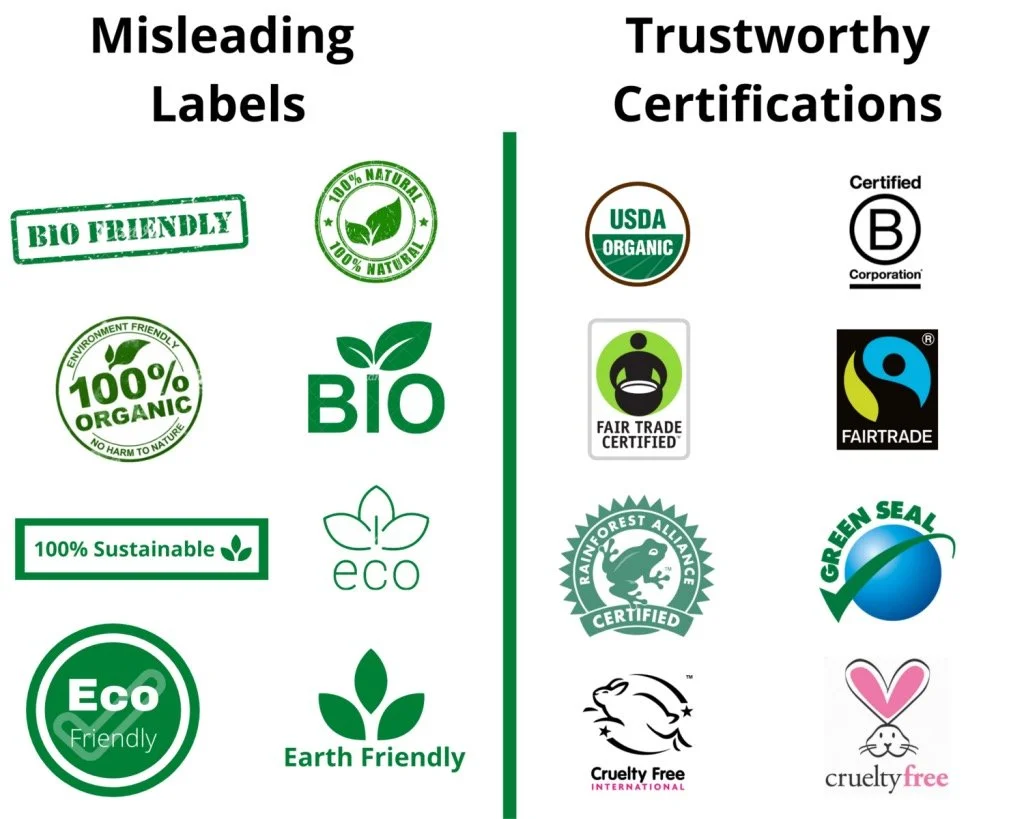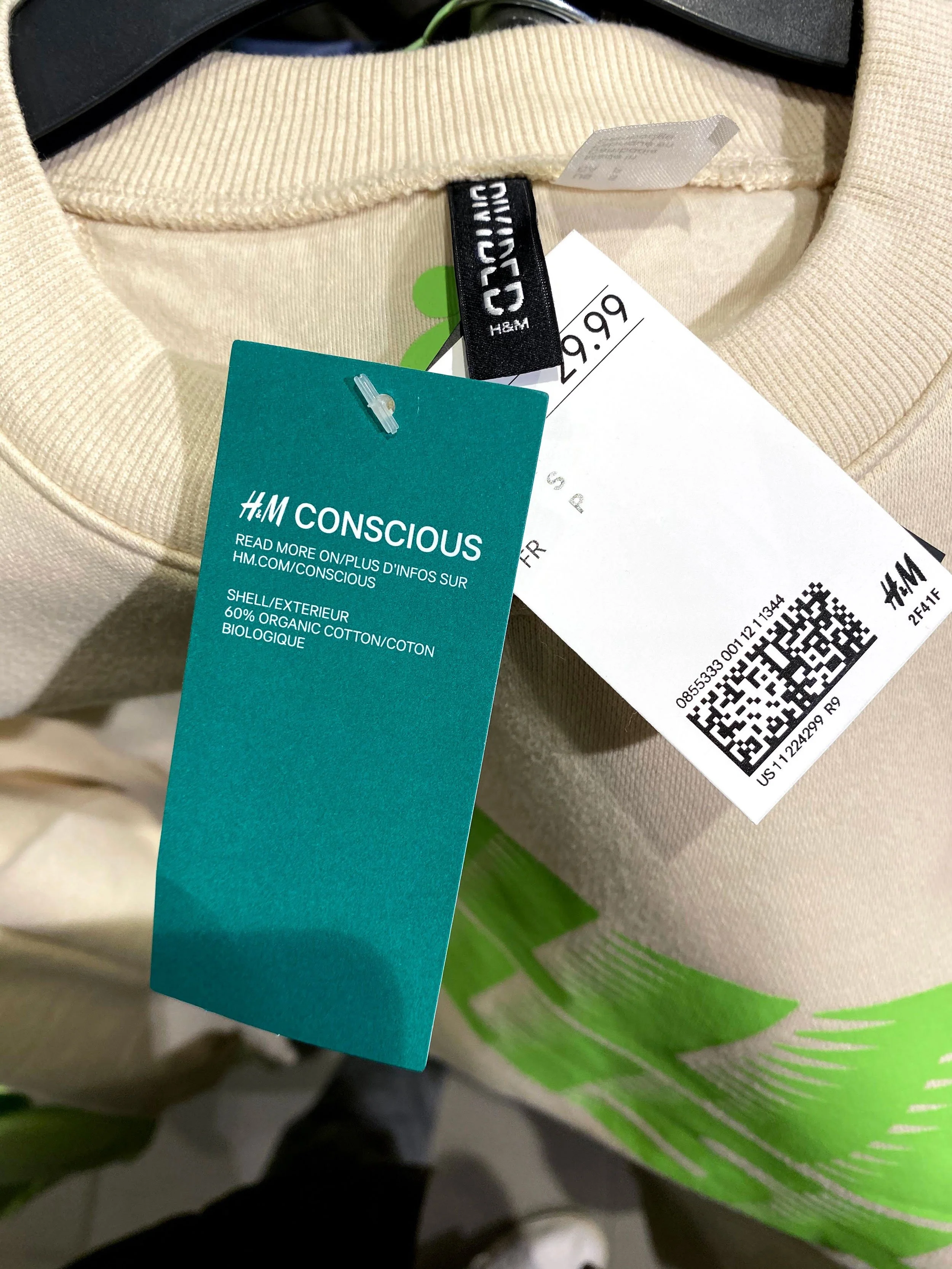Greenwashing: is the Fashion Industry finally taking action?
What is greenwashing?
I’m sure we have all come across the term greenwashing in one way or another by now, but here is a little explanation for those of you who haven’t. Greenwashing is the act of making false or misleading statements about the environmental benefits of a product or practice ( NRDC, 2023). In the fashion industry, this has turned into a marketing and PR stunt, deceiving consumers into thinking what they are buying isn’t harming the environment, when in reality, it is.
Luckily, the EU is beginning to crack down on greenwashing, meeting an agreement on regulations for labelling and marketing in fashion. Fashion brands can no longer make generic environmental claims such as ‘biodegradable’ without proof, claims on emissions, durability claims without proof and much more ( see the image above for examples).
Greenwashing Example
One large change is that labels created by companies themselves will no longer be allowed. In 2022, H and M were filed a lawsuit due to their marketing scheme of greenwashing their products, convincing consumers they were environmentally friendly when they were not. The scheme stated that old garments were turned into new ones, and they would not end up in landfill. However, the lawsuit stated that ‘recycling solutions either do not exist or are not commercially available at scale for the vast majority'( thsustainablefashionforum, 2023). So, what has H&M learned from their lawsuits? Despite their promises to achieve net zero by 2040, along with cutting emissions, following the right procedures isn’t enough for the company to be marked as ‘sustainable’, due to their rate of production. On the Impakter index, the company has a ‘c’ rating.
Even this score is based on their promises and small efforts such as using less water in the production process. The company has a long way to go to come back from the multiple scandals it has had over the years, involving human rights and sustainability.
What is being done?
Large companies can almost never be fully sustainable. As much as we wish for companies to be environmentally friendly, and they can make more efforts, the production scales make it near impossible. DR Brett Staniland, sustainable fashion editor said ‘High street brands cannot be sustainable as they focus on capitalism, profit and growth, this is their priority’. In 2023, the Fashion Act was reintroduced in the New York State Legislature, requiring companies to improve due diligence on both environmental and human rights issues. (FashionUnited.UK 2024) Though the bill is yet to be passed, this act will hopefully encourage countries worldwide to follow suit and tighten laws on textile production.
What can we do to help?
There are some ways that we as consumers can make an effort to be more sustainable. These include shopping second-hand and. repairing clothes. If we do end up purchasing from larger retailers, which the majority of us still do due to cheap prices and efficiency, ensure they get worn many times, and if they are no longer needed, donate or repurpose them. Hopefully, more laws and regulations will be put into place to give guidelines to these larger corporations, and greenwashing will be reduced.

